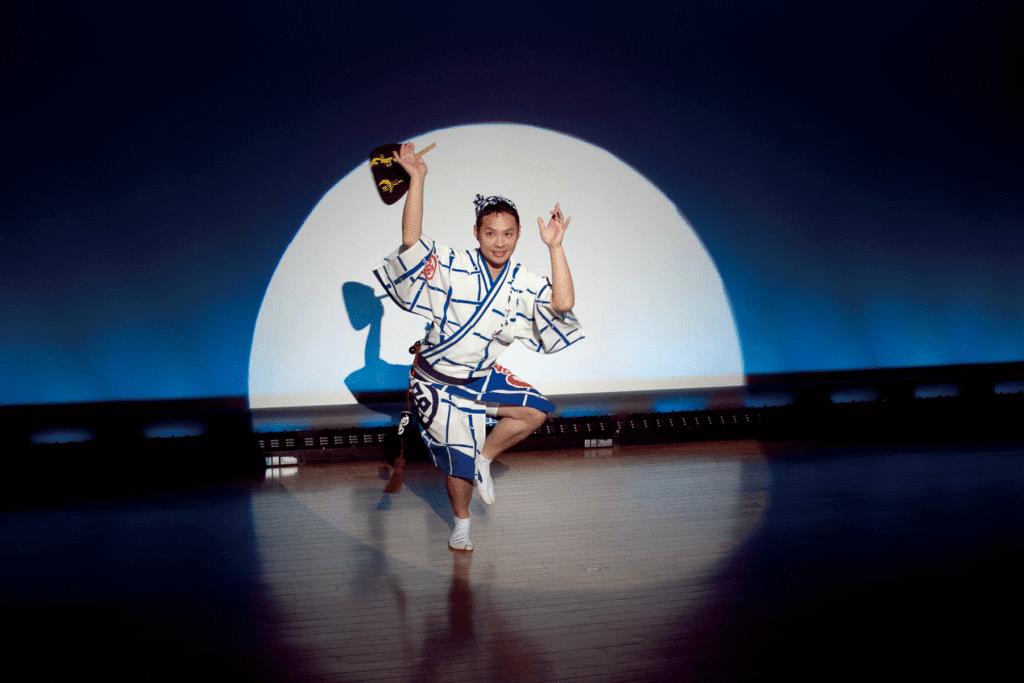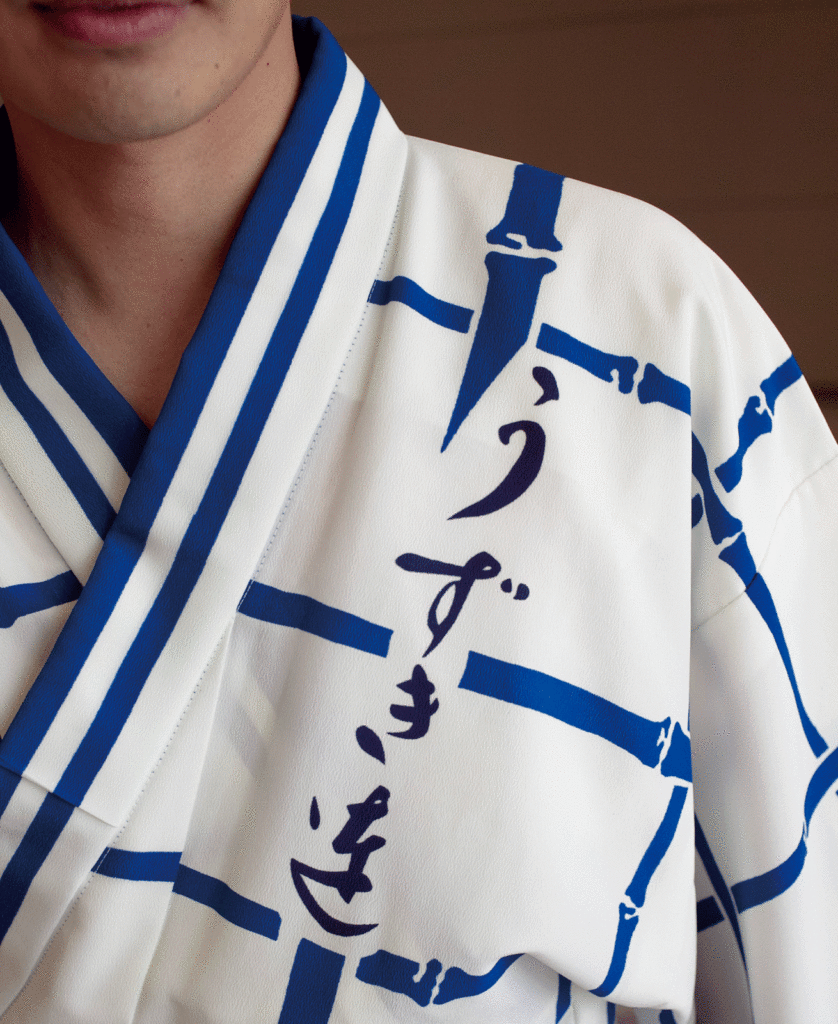Story 03 | Dancing out from Tokushima
A Tokushima local, from a family with a deep Awa Odori history, Daisuke Takase had no interest in the Awa Odori festival when he was young. He felt it was archaic and banal, nothing to be treasured. Then when he was 23 a friend encouraged him to join the ‘Uzuki’ Ren and begrudgingly Takase accepted. Ten days after joining Takase found himself dancing in front row of the Awa Odori festival, an event typically reserved only for dancers who had practiced for years. “Somehow it came very easily, I had a natural rhythm.” Some local people were not so surprised, “it’s part of his DNA, in his blood.”
Takase’s unexpected first experience was a monumental moment, he remembers the eyes of the spectators watching him that first time, “when I danced people looked right at me, it gave me an energy i’ll never forget.” Eleven years have passed since then and Takase has taken part in festivals all over Japan. He even performed for the Emperor and Prince Charles, on one of Japan’s diplomatic visits to the England, (“I remember Prince Charles went red when we brought him up to dance”).

Takase now works for the local government and still practices every week with his Ren. Talking with him in a downtown Tokushima café he see’s the local Awa Odori festival taking on new qualities. “People in Tokushima sometimes feel we have nothing to offer as a region, no cultural treasures, but it’s simply not being used right.” To him the festival is a gift, an extremely valuable cultural resource, but one which he feels could be made even more valuable. In its original incarnation, the Awa Odori was a wild, even anarchic, festival for the dead but “at some point Tokushima tried to make money off the festival and the dancing became less spontaneous and more of a performance.” Takase is now paying attention to celebrations of the festival which have sprung up in other cities, most notably in Koenji, a suburb of Tokyo. Awa Odori was brought here by Tokushima migrants in the 1950’s and for three days each year the festival is celebrated in a distinctly looser version of the larger event in Tokushima. Over a million spectators line a narrow Koenji shopping street, to “watch, dance and have fun,” says Takase. But “in Tokushima it’s different” he says, “it’s more about skill, and the spectators pay close attention to your technical ability.”
How is it possible to keep that original spirit alive in Tokushima now? To Takase, this is “about returning to something very old, something essentially Japanese. It’s about hearing the shamisen and the high pitched bells, and dancing on the street, calling up the spirits of the dead.” Takase see’s a future where that original atmosphere not only returns to the Awa Odori in Tokushima but spreads out to other towns across the country — where for a few days each year the Japanese islands themselves are enraptured in that old, ecstatic dance.
< PAPERSKY no.38(2012)>












